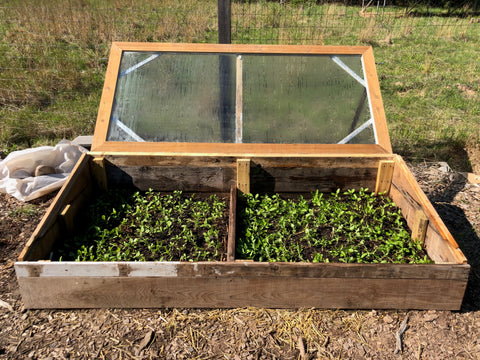Tenkozan: Made on the Mountain- Monastery Dye Garden
As a forward to this blog post: Words from our head gardener at the Monastery Dye Garden, on behalf of the resident sangha:
It is with gratitude and humility that we acknowledge that we are learning, speaking and gathering on the ancestral homelands of the Munsee Lenape people, who are the indigenous peoples of this land. Despite tremendous hardship in being forced from here, today their community resides in Wisconsin and is known as the Stockbridge-Munsee Community. We pay honor and respect to their ancestors past and present as we commit to building a more inclusive and equitable space for all.
We acknowledge that we would not be alive today if not for the knowledge and wisdom of the Native Peoples of this land. The cultivation of natural pigments, and the process of using them for dye, stems back throughout world history- long before the colonial inhabitants of the United States. We are grateful to have access to this information now.
We thank the indigo artisans of Japan, who generated, inspired, and transmitted this practice to the western world. We thank the Munsee-Lenape people for caring for this land for centuries before we lived here.
We are so grateful to have this small plot to tend to. It has been worked with many loving hands. We aspire to integrate the practice of zazen into our work in the dye garden. We return- return to this mountain, return to our bodies, and ultimately return home. Thank you for joining us on this journey. May we all have loving relationships with this earth, and may we all return home.
We appreciate your support, and we encourage you to support Indigenous artisans, Black artisans, and artisans of Color.
Stockbridge-Munsee Band of the Mohican Indians website
Website featuring BIPOC artisans
In 2018 The Monastery Store launched our Tenkozan collection of products. Tenkozan: Made on the Mountain is also a guiding philosophy for how to create part of a right livelihood for the Monastery, as well as a way train bodies and minds in the Dharma through the creative process and work practice. Since it's inception, the Monastery Dye Studio and Monastery Stitchery have been collaborating to make the beautiful one of a kind fabric items that are sold in the “on site” Monastery Store.
To craft the 100% plant based dyes used in the Dye Studio, the Monastery cultivates the plants and flowers on our grounds to this exclusive purpose. Each spring, the seeds for the plants we use are started in the Monastery Garden greenhouse, and then are moved to the upper meadow next to the orchard, where the seedlings begin to take form in the Monastery Dye Garden
These "cold frames" are an innovation from head dye gardener, Mariana, and were constructed with help from seasoned Monastery carpenters. Pictured above is the incubator for the indigo seedlings, and below is Mariana, with the cold frame for the coreopsis seedlings.
After a few weeks of incubation, some of the residents gathered over hosan to plant the seedlings in in the prepared garden beds.
Below, the indigo adjusts nicely to it's new earthly home.
With constant care and watering, these plants will grow to become next year's indigo, as well as other plants and flowers used to make dyes like coreopsis, hollyhock, madder and scabiosa.
Below, Mn. Shoan waters each indigo plant to make sure they are getting the hydration they need.
The Japanese Indigo varietal we cultivate is a rather fussy plant to grow. The color yield of each harvest is dependent on the soil nutrients, hydration and the timing of the harvests in the summer season. The plants also require blight monitoring, since too much water can cause fungus to grow on the leaves. With great care to impact the earth minimally, the plants are treated with Neem Oil and other natural anti fungal methods. In the end, much of the indigo from our soil produces a blue that competes with the splendor of a clear summer sky, and the range can deepen to the dark greyish blue one would expect to find in denim.
Above is madder, a perennial from last year, re-growing strong in the raised bed. Madder is a common natural dye in India, Turkey Iran, as well and Japan. The varietal grown in the dye garden produces a color ranging from light pink to brick red depending on the mordant used to treat the fabric. On the right, hollyhocks are flourishing! This is the first year for hollyhocks, which can produce a range of dye colors from soft yellow to green and lavender. Hollyhocks belong to the same family as hibiscus, okra and cotton, and the herbage and flowers are edible.

About a month later... the dye Garden in late July is completely different. Hollyhocks are in bloom, and growing tall...
Stay tuned for more progress photos as we move through the season...








